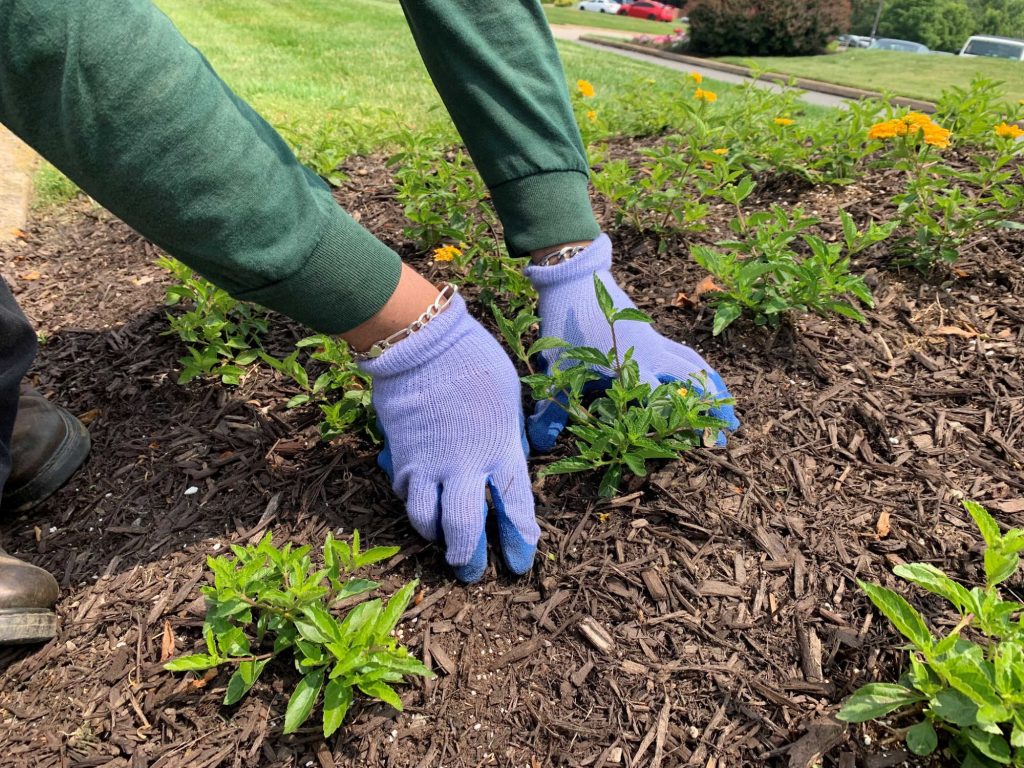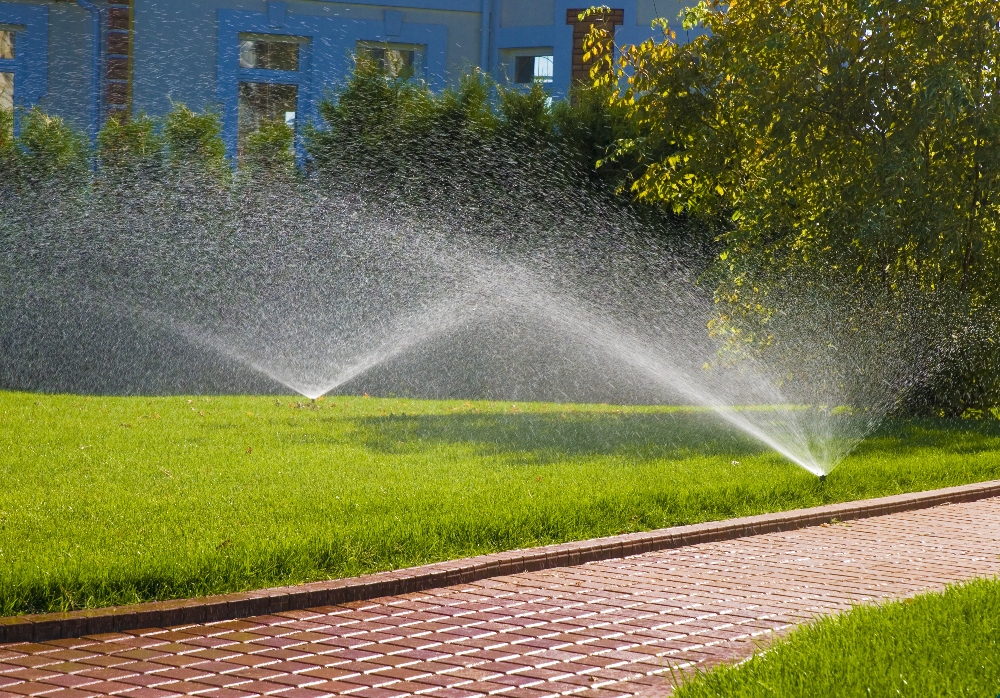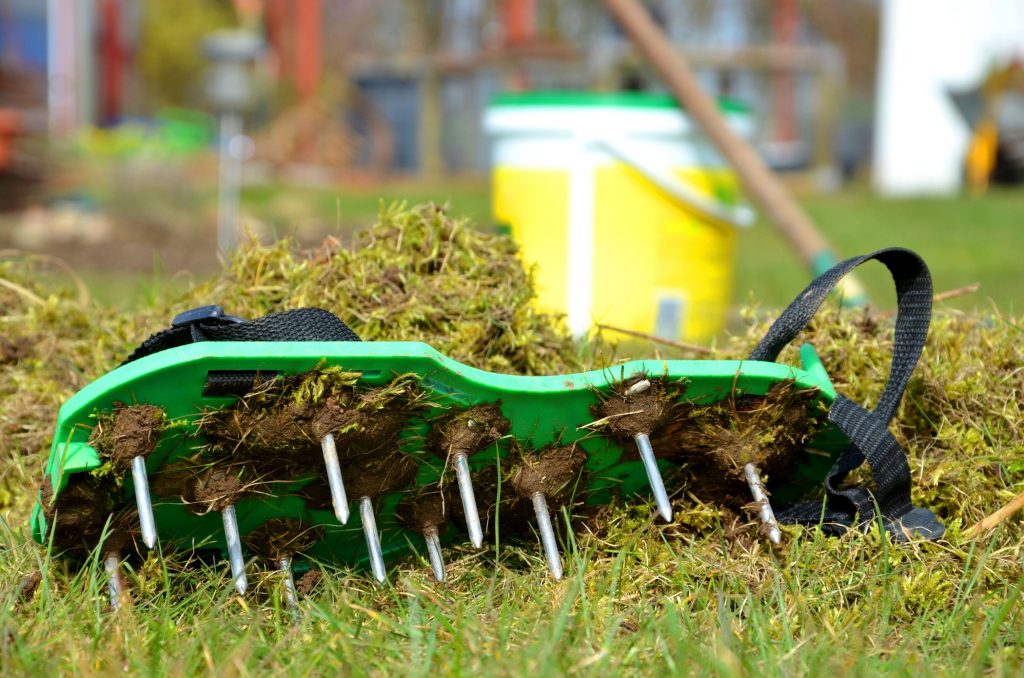8 Plant/Lawn Watering Tips to Keep Your Commercial Property Hydrated
All it takes is a few dry days for your commercial landscape to start drooping, turn yellow/brown and start withering.
Your property’s curb appeal speaks volumes to customers or visitors, and an unsightly landscape is one quick way to deter them.
Keep your property lively to attract passersby, by properly moisturizing your landscape. Here are eight plant and lawn watering tip to help maintain moisture all year long.
1. Add Mulch
Out in nature, naturally decomposing materials line the ground. This organic matter like wooden/sticks, fallen leaves, etc. helps landscapes to maintain moisture and recycle nutrients, but our neat and proper commercial properties don’t have that extra layer of protection.
Think of mulch as your next best option to debris. Mulch is a popular choice for businesses and commercial properties for many reasons, as it can help to combat weeds, replace grass, reduce maintenance and more.
In addition, mulching your garden beds can help to moderate soil temperature, prevent runoff or evaporation and maintain moisture. But be careful to not overdo it, as over-mulching can lead to some major problems.

2. Lay Down Compost
While mulch does an excellent job helping your landscape retain moisture, there are ways you can mimic other organic matter found in nature. Compost contains many hearty, earthly materials that are ideal for adsorbing water. It’s a win-win, because not only will compost help your lawn or plants hold more liquid, but it will also nourish them with important minerals.
In addition to compost, many granular fertilizers can help to add organic matter and rich nutrients too. Look for a slow-release product, not liquid fertilizers, as granular applications break down over time— extending the benefits. Plus, they get absorbed directly into your soil to provide long-term moisture control, instead of being instantly transferred up into the plant like liquid solutions are.

3. Water Deeply
There’s no magic number for what watering deeply constitutes, however, it usually implies watering enough that moisture can sink at least eight inches beneath the soil surface.
The reason many lawn care professionals will advise you give your turf/plants a deep watering is because most plant roots do not sit close to the soil surface, and instead nest deep down to access stored water and nutrients. Shallow waterings or lawns/plants that don’t receive at least one inch of water every week (more during hot summers), can cause yellowing leaf tips, brown grass or overall moisture stress to your landscape.
4. Aerate Your Soil
Compact soil doesn’t absorb water well, as it’s too dense to allow the moisture to pass through. After a particularly snowy winter or foot traffic-heavy summer, aerate your soil so that H20 and other nutrients can penetrate beneath the surface. Learn more about aerating your commercial landscape here.

5. Use a Moisture Management Product
Have you ever heard of moisture management products? These solutions are engineered with microscopic compounds, which pull moisture from your soil and pool it into water droplets— for your plants and grass to absorb.
These droplets are extracted from the soil even in times of drought, as they target moisture stored deep in the earth and feed it to nearby root systems. Best of all, many treatments last for up to three months! For large corporate landscapes that require frequent, laborious waterings, these solutions are often a lifesaver.
6. Water the Surrounding Soil, Not Just the Base
When watering plants, many people make the mistake of watering only directly around the base of the stem, rather than the soil surrounding it. A lot of plant roots spread and stretch wide underneath the surface of the soil, and if you only water directly below the plant, you’ll miss the roots.
Your plant roots often extend past the width of its leaves, in what many landscapers refer to as the “drip zone.” When rain runs off these leaves, that’s where it drips. When spraying your plants, be sure to moisturize around the perimeter and not only the central point.
7. Eliminate Weeds
Simply put, weeds suck up valuable water that your other plants could be receiving. Don’t let these nuisances steal your H20 and make your commercial property look disorderly, by treating your landscape with weed control.
8. Install a Drip Irrigation System
Many commercial landscapers can benefit from a professionally installed drip irrigation system, which helps to water your plants on a set, timed scheduled. This eliminates a lot of headaches for you, takes pressure off those maintaining your landscape and keeps your grass hydrated, consistently.
When properly set up, these systems can also help to minimize water runoff, soil erosion and the evaporation of surface water. Ask a member of our team about installing better irrigation methods around your property.
Leave the Watering to the Professionals

You may think that hydrating your landscape is an easy feat, but many large commercials properties require a lot of attention and many hands. That’s why it’s almost always better to leave the property maintenance to the professionals.
The key to a moisturized landscape is proper soil care, and our team is here to ensure you have a drought and disease-resistant foundation to foster lush growth.
